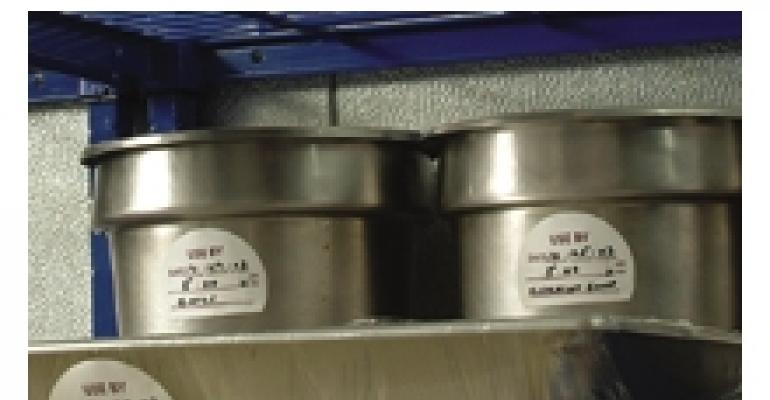
IT'S a dream when partygoers take home wonderful memories of your event. It's a nightmare when they take home a foodborne illness.
An estimated 76 million people contract a foodborne illness each year in the United States alone, according to the Centers for Disease Control. And for anyone with a catering business, even the specter of putting guests at risk of illness can be bad news. Los Angeles-based Wolfgang Puck Catering grabbed headlines in February when it was revealed that an employee with Hepatitis A might have exposed guests at 13 events to the disease. According to the health department, no guest ever fell ill — a fact that received far less coverage.
Because caterers prepare and serve food in large quantities, not to mention often transport it to far-flung venues, they have special food-handling concerns. Here, LeAnn Chuboff and Kristie Grzywinski, both directors of science and regulatory relations for the Chicago-based National Restaurant Association Educational Foundation, share the recipe for keeping catering operations safe.
SPECIAL EVENTS MAGAZINE: In regard to foodborne illness, what are the biggest threats that catering operations face?
LEANN CHUBOFF: The CDC came up with five risk factors for foodservice:
-
Purchasing food from unsafe sources;
-
Failing to cook and reheat food adequately;
-
Holding food at improper temperatures; that is, failing to keep cold food below 41 degrees Fahrenheit and hot food above 135 degrees Fahrenheit {5 degrees and 57 degrees Celsius};
-
Using contaminated equipment, which means keeping surfaces clean and sanitized along with keeping raw and ready-to-eat foods separate;
-
Practicing poor personal hygiene. You need to have a hand-washing program in place, and you want to minimize bare-hand contact with food through using gloves, tongs, whatever. Also included here is reminding employees not to come to work when they are sick.
Q: What are the best ways to transport prepared food in bulk?

KRISTIE GRZYWINSKI: Start with food properly cooked and held at the proper temperature. Then transport the food and serve it within four hours. Discard any leftovers.
Q: What about food on the buffet line?
KG: If you can control the temperature of the food, then keep hot food above 135 degrees Fahrenheit and cold food below 41 degrees Fahrenheit. If you are not controlling the temperature — which is acceptable — you have four hours to serve it. You can add food to food already on the buffet as long as the original food is out for four hours maximum.
LC: If you are displaying food on crushed ice, don't use that ice for anything else. Try to provide a barrier between the food and the ice. And make sure the ice is self-draining so you don't have food sitting in slush.
Q: What instructions should caterers give to service staff?
LC: Wash your hands, don't come to work if you are sick, and pay attention to time and temperature control. Also, it's a good idea to have staff on the line to give a new plate to guests each time they go down the line. On cruise ships, there is a server assigned to each specific menu item so that only one person ever touches the serving utensil. Staff can also watch out for young guests who try to taste something before they put it on their plate!
Q: Do you think that the catering industry is as aware as the restaurant industry of food safety risks?
LC: Food safety has no specific venue.
KG: I agree with LeAnn. Food safety is a top priority for any operation that wants to stay in business.
The NRA Educational Foundation can be reached at 800/765-2122 or 312/715-1010, or visit www.nraef.org.





